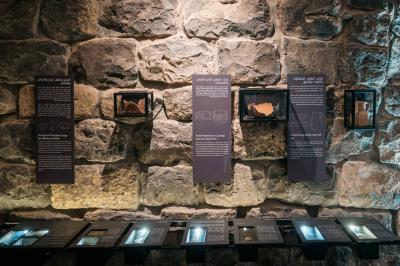The World Heritage Committee of the United Nations Educational, Scientific and Cultural Organization (UNESCO) announced today, Friday, the inclusion of the Jordanian city of Um al-Jamal as the seventh Jordanian site on the UNESCO World Heritage List, which already includes Petra, Qasr al-Amra, Um al-Rassas, Wadi Rum, Al-Maghtas, and Salt. This announcement was made during the 46th session of the World Heritage Committee held in India.
Jordan's Minister of Tourism and Antiquities, Makram al-Qaisi, stated during the meeting immediately after the announcement, "Today we celebrate the inclusion of Um al-Jamal on the UNESCO World Heritage List, but we also celebrate the strong relationship between the Kingdom and your esteemed organization that has lasted for decades."
Um al-Jamal is the third Nabatean city after Petra and Um al-Rassas, representing an extension of Nabatean rule to the north and serving as evidence of the Nabateans' ability to build a sustainable and intelligent system despite water scarcity. It highlights the resilience of the area's inhabitants both then and today.
The inclusion of Um al-Jamal was based on the exceptional global value outlined in the Jordanian file submitted in 2022, which also met safety and/or authenticity requirements and a management system that ensures the preservation of the site. This inclusion exemplifies achievement and harmony between national institutions represented by the Ministry of Tourism and Antiquities, the municipality of Um al-Jamal, and the Department of Antiquities.
Um al-Jamal, an archaeological city in the Mafraq Governorate, is famously known as the "black oasis" due to the abundance of black volcanic rocks. The name "Um al-Jamal" comes from the use of camels as a means of transport during trade caravans.
As an important trade caravan station, the city lies along several trade routes, the most significant being the Trajan Road that connects the ancient Nabatean capital of Petra with the new capital of Bostra, as well as another trade route that comes through Wadi al-Sirhan (Diokletianus). The Nabateans settled in Um al-Jamal in the first century AD, and after the declaration of the Roman Empire, it was occupied by the Romans, becoming an important agricultural and trade village from the fifth to the eighth centuries AD due to its location along the Trajan and Wadi Sirhan roads.
During the Byzantine rule, Um al-Jamal transitioned to Christianity, with 15 churches built over different periods, the earliest being the Julianus Church. It was opened to Muslims in the seventh century during the Umayyad rule until a devastating earthquake in 749 destroyed many archaeological buildings and led to the displacement of the region's inhabitants.
In the Umayyad period (636 – 750 AD), Um al-Jamal flourished when Damascus became the capital of the Umayyad state, leading to the reuse of Roman and Byzantine residential houses, as well as the Roman administrative building. The throne hall was used during the Umayyad period, and the Umayyad house currently serves as the visitor center for Um al-Jamal (the museum).




